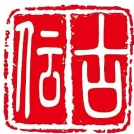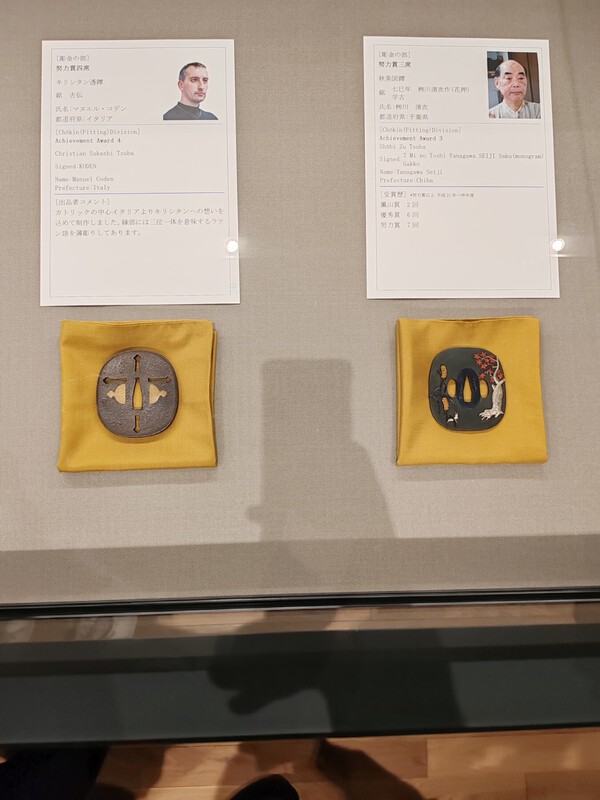-
Posts
507 -
Joined
-
Last visited
-
Days Won
11
Content Type
Profiles
Forums
Events
Store
Downloads
Gallery
Everything posted by C0D
-
Yesterday i attended the ceremony for the NBTHK competition, after that we also had the chance to have a preview of the exhibition. It was a great emotion and also an opportunity to meet many people of the Nihonto world.
- 29 replies
-
- 17
-

-

-
Excellent article with great pictures, must have taken a lot of time and effort to create it
-
Thank you, i will sure do both I will update the post after the ceremony to tell how it went
-
I did gave it a thought, but there are several reasons why I don't do that. First and foremost I'm a father of a 2 years old, so my presence here is very much needed. Another reason is that for me this is an hobby, and actually I'd like to keep it that way. There's basically no professional tsubashi even in Japan, they all do side jobs (mostly jewelry), that's because nowadays is very hard to make a living out of it. So I rather work on my spare time, doing the occasional commission and my experiments. Also even in Japan nowadays nobody is working in this style, as you said there was Issei which was a Mukansa, but he left no student and his books didn't provide any information that I didn't knew already. So there won't be much help in going there to study as nobody can actually teach me. I've got so far with my own means, so I think I can keep doing it. Of course I go almost every year to Japan to study tosogu (and nihonto), so I think I'll keep this way, at least for some years 🙂
-
Today NBTHK published all the results for the contest 2025年度現代刀職展「研磨・刀身彫・彫金・外装の部」審査結果一覧.pdf Jeff Broderick won the 1st Effort Award and there were 7 Nyusen ranked after me. I should also adjust my statement, Jeff won at least another award in 2020 so, unfotunately for me, i'm not the first foreigner to win an award. But maybe i'm the first non-Japan resident to win It will be interesting to go the ceremony and compare my work with all these great artists!
-
Thanks, let me explain more about the design I chose. Maybe it's hard to see from the pictures, but the plate is concave, that and the shape of the cross with the amida yasuri makes it feel like the cross is embracing the viewer when seeing it in hand. The raised mimi gives a more powerful look overall. On the back the bold "INRI" (traditionally found in representations of the crucifixion) engraving is meant to be seen mainly by the wearer. The hitsu ana are filled with brass and shaped as the globus cruciger (cross-bearing orb) which represents the power of Christianity over the world. The etching on the mimi has the sentence "in nomine patris et filii et spiritus sancti" (In the name of the Father, the Son, and the Holy Spirit) and the placement of the cross on the mimi Is exactly where the wearer would rest his thumb when ready to unsheat the blade. I hope this explanation will make you appreciate it a little more 😄
-
Thank you everyone! The writing on the mimi wasn't actually engraved, but it was written in lacquer by a friend of mine, she's a calligrapher specialized in medieval writing, then etched. All the tsuba elements were studied to carry a meaning and to be plausible to find on a Momoyama period tsuba, so also the style of calligraphy is the one used in late 16th century.
-
I'm proud to announce that my Kirishitan tsuba got awarded the 4th Effort Award in this year's NBTHK contest! This is an incredible reward for my hard work on improving my skills. To my knowledge i'm the only foreigner to win an award in this category for NBTHK competitions ( Ford Hallam only achieved Nyusen before moving to NBSK). My work will be featured in the catalogue and the exhibition, so please take a look if you have the chance. Following there are the pictures and a link to a video that shows the special feature of the mimi Link to the video https://drive.google.com/file/d/15HyBoEufhpyEx98n4Y9BETWOtrMtt5o6/view?usp=drive_link
- 29 replies
-
- 34
-

-

-

-

-
Most of tsubashi do them themselves, there are videos about making the tools as well on the channel
-
you can start by studying Ford Hallam's Youtube videos https://www.youtube.com/@FordHallam
-
https://note.com/katana_case_shi/n/nf87e5c28feb4?magazine_key=m92e5a83d03ce Here's the winning works of last year's NBTHK contest
-
Izumi no Kami Rai Kinmichi
-
Just for clarity i was never a student of Ford, except watching his tutorial videos on Youtube i had no relationship with him, i'm pretty much self-taught
-
Among Ford's students there's also Christoph Kopp from Germany, he just won 3rd Silver in this year's NBSK competition. Seems Kevin is no more active on social media either.
-

Repair/restoration for an important Momoyama Period Owari tsuba?
C0D replied to Iaido dude's topic in Tosogu
It would be possible to have it done, but there's the serious risk that the patina of the new piece won't really match perfectly the original one, i'd personally leave it as it is. Especially considering that the papers won't match the tsuba anymore, making them useless. -
Carbon content is related to utsuri no doubt of that, a 0.45% C can't produce utsuri, while over 0.7% can. Anyway I shared enough of my personal experience and Japanese swordsmiths experience, the readers can decide what they think works better. The topic is already exhaust for me
-
I don't see any mention to utsuri or hamon in the article, I don't know how can be relative to the utsuri topic. This process shows how grain size changes during cycles of normalizing and annealing. The grain size doesn't affect the appearance on the ji, it might influence the hamon in some degree, but depends on how the yakiire is performed
-
I would say not a common way to make utsuri, also not much reliable, but it still can work, since the principle is the same, different temperatures when cooling rapidly
-
-
Exactly, any form of forging and hardening is a thermocycling, but what he stated in his first post is a series of process of heating and cooling with application of clay prior to the yakiire that would lead to the creation of utsuri. I just want to know where this information comes from and how it should look like when it's done. Because so far the only way I know to create utsuri is by temperature control during yakiire. It's not something I claim, it's been done by several swordsmiths, not only Japanese
-
Of course any form of hardening is a thermocycling, because it changes the composition of the metal through heating and rapid cooling, what I mean is that specific process you described in your first post. Can you provide an example of blade made that way and how you know that process has been used on it?
-
I have close to 1TB in my library, you gonna need to be more specific on what you want me to show you. Meanwhile can you show me some examples of what you assume is an utsuri created by thermal cycling?
-
I already showed several examples, but apparently they're not utsuri? I'm not trying to fight or being petty, just I'm sharing my first hand experience, and those who say I'm wrong provided no evidence of what they're saying.










